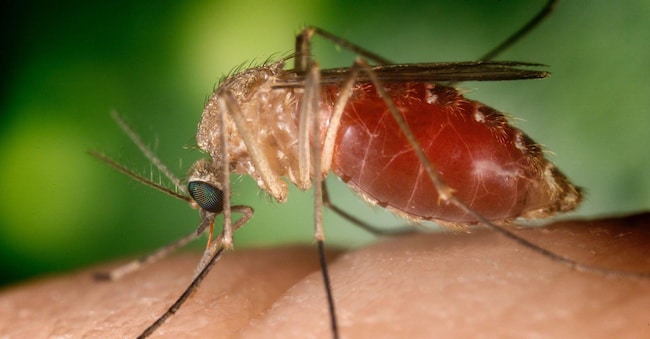Different countries, different mosquitoes: the origins and differences between dengue, chikungunya, and West Nile.


Different countries have different mosquitoes. But due to globalization, and therefore the long and frequent journeys of people and goods across continents, it can sometimes happen that they all live in the same country. This is happening in Italy, which is hosting colonies of mosquitoes that transmit the dreaded dengue, chikungunya, and West Nile viruses.
Not so long ago, these infections were considered "exotic" or "rare." But today, thanks to climate change and the migratory movements of birds and insects, they are making headlines and have rightfully become a concern for citizens who have begun to learn about arboviruses.
But what are they? They are infectious diseases caused by viruses that are transmitted to humans and other animals by arthropod vectors such as mosquitoes and ticks, through bites or stings. The virus is not transmitted from human to human.
The names of these infections—Dengue, Chikungunya, and West Nile—recall distant worlds and languages. Dengue is also known as "break-bone fever" for the skeletal pain it causes, while the term Chikungunya, of African origin, means "that which bends or twists" due to the specific joint pain that forces one into a defensive, immobile position. The culprit for these two infections is the Aedes mosquito, the so-called "tiger mosquito," which spread to Italy in the early 1990s when it first landed in Genoa along with a shipment of tires from the USA. The name "West Nile," however, derives from the district of Uganda where the virus was first isolated in 1937, based on the place of origin of a woman who presented with feverish symptoms. The virus, therefore, takes its name from the region where it was discovered and this is why in Italy it is also known as "Nile fever".
Regarding Chikungunya, the first locally transmitted cases in Italy date back to 2007. Following the bite of a mosquito carrying the virus—as reported by the Epicentro website of the Italian National Institute of Health—the incubation period ranges from 3 to a maximum of 12 days. This is followed by sudden onset of fever and joint pain, limiting patients' movements, who tend to remain completely immobile and curled up. Symptoms also include muscle pain, headache, fatigue, and a skin rash. In most cases, patients recover fully, but joint pain can persist for months or even years. Serious complications rarely occur, but the disease can be a contributing cause of death in the elderly.
To date there is no cure and treatments are symptomatic although a vaccine has recently been approved in the USA, but is not available in Europe.
Dengue virus primarily inhabits humans, but there is no direct human-to-human transmission. It circulates in the blood of an infected person for 2 to 7 days, and if a mosquito bites during this period, it can transmit the virus to others. Five or six days after the bite, if the disease develops, the patient may experience a very high fever, severe headache, pain around and behind the eyes, severe muscle and joint pain, nausea and vomiting, and skin irritations that may appear over most of the body 3 to 4 days after the onset of the fever. Complete recovery is usually achieved within 2 weeks. Rarely, the infection can develop into hemorrhagic fever—which occurs primarily with a second episode of infection—with severe hemorrhages that can cause complete collapse and, although in rare cases, be fatal. There are two vaccines available for prevention: one is only recommended for people who have already been infected, and the other is effective against different serotypes of the virus, although its use must be evaluated on a case-by-case basis.
Unlike the other two infections, West Nile virus is not transmitted by the tiger mosquito, but by the Culex mosquito. Again, there is no human-to-human transmission, and the "viral reservoirs" are primarily birds. The incubation period after a bite is longer than that of the other two arboviruses, as symptoms can appear up to 14 days later, and can even last up to 21 days in people with a weakened immune system. Most infected people do not develop symptoms, but when they do appear, approximately 20% of those infected experience mild symptoms: fever, headache, nausea, vomiting, swollen lymph nodes, and skin rashes. Eighty percent are asymptomatic, and only 1% of cases are at risk of worsening the condition due to age and already compromised health. More severe symptoms can include high fever, severe headache, muscle weakness, disorientation, tremors, visual disturbances, numbness, convulsions, and even paralysis and coma. Some neurological effects can be permanent. In the most severe cases, the virus can cause fatal encephalitis, and there is no specific treatment.
Regardless of the name of the virus or the mosquito that carries it, prevention remains the most effective way to prevent infection. Here are the experts' recommendations: use mosquito repellent, wear clothing that covers the body, sleep under mosquito nets, and, if possible, stay in places with air conditioning or screens on the windows. It's also important to eliminate mosquito breeding grounds, such as stagnant water (planters and wading pools), and talk to your doctor about vaccinations, especially if you plan to travel to endemic areas.
News and insights on political, economic, and financial events.
Sign upilsole24ore





